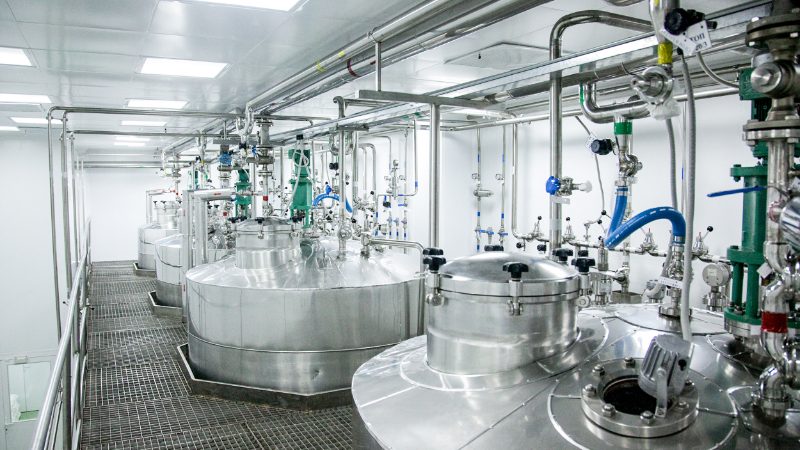Most of the active components in drugs either are compounds obtained by chemical synthesis or biomolecules produced by microorganisms (often proteins), which are then called biopharmaceuticals. When we talk about biomolecule production it can be separated into two sections: the up- and downstream-process. The main focus of an upstream-process lies on the preparation of the host cells and their fermentation. After a successful production the target protein needs to be separated from impurities. Protein purification – the downstream process – is an important procedure used to produce biomolecules in a highly pure form for the use in human healthcare.
Before you start designing your protein purification procedure, at the laboratory-scale, ask yourself 4 questions.
- What is the purpose of the target protein?
- How much of the product is needed and how pure should it be?
- Does your protein of interest require prior sample preparation?
- And finally, how can an ideal purification strategy be set up?
Desired potency and purity of the target protein are depending on the use of the end product. The highest level of these two crucial factors is required for biopharmaceuticals. Sometimes sample preparation steps are necessary prior to the actual purification process. For example, when you can’t start right away with the purification steps because the buffer needs to be exchanged or the concentration of the target protein is too low.
The Holy Grail of a protein purification strategy
Clear the decks for action! Now we are taking a brief look into purification methods. Commonly one or more chromatography steps are involved. The separation is done according to the properties of the protein of interest, e.g. size, charge, hydrophobicity, specific ligand recognition or metal binding. In addition the properties of other substances within the matrix, which have to be removed during the purification process, have to be taken into account.
The purification procedure has three phases: capture, intermediate purification and polishing. As you can see in Fig. 1 the purity of the product increases with each step. This three-phase system is also used to purify biomolecules or other pharmaceutical compounds in large scale.
The capture phase is used to isolate, concentrate and stabilise the target protein by isolation. During the intermediate purification phase most of the contaminants, like other proteins, nucleic acids, endotoxins, viruses, charged variants and aggregates are removed. The polishing phase gives your product the last tweak by increasing the purity by elimination of remaining impurities.In order to come to the point, nearly every purification step results in a loss of product. The main goal is to find the right balance between isolating the protein of interest and the purity degree of the product.
At acib the working group of Univ.Prof. Dipl.-Ing. Dr.nat.techn. Alois Jungbauer is dealing with different purification strategies.
This work is based on:
Handbook “Protein Purification” from GE Healthcare Bio-Sciences AB
Picture credits: Shutterstock
